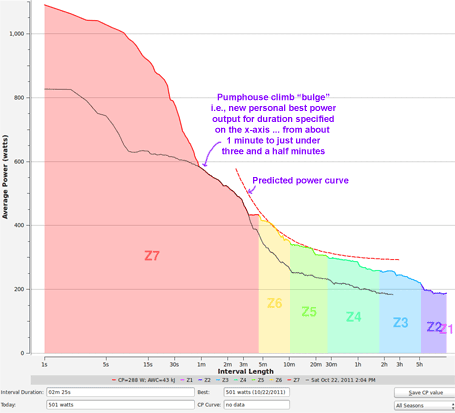Wow, what a week this has been for the Strava KOM shoot-out. I thought for sure I had Pumphouse signed, sealed, and delivered – but no – Paul “TreeTrunk” Tower came along today and set down a blistering time of 2’22” with an average speed of 20.4mph on the 0.8 mile climb. Still, here is the data from my 2’25” effort (20.0mph) yesterday, which put a bulge in my Golden Cheetah critical power curve: (I can only imagine what Paul’s power must have looked like since he weighs a few pounds more than me!)
 Pumphouse KOM attempt critical power curve
Pumphouse KOM attempt critical power curve
 Pumphouse KOM attempt data plot
Pumphouse KOM attempt data plot

Leave a Reply